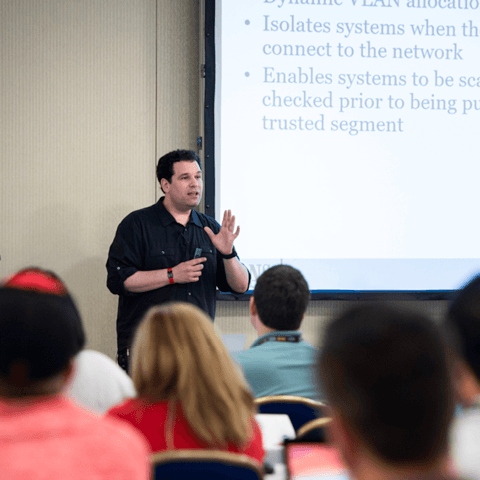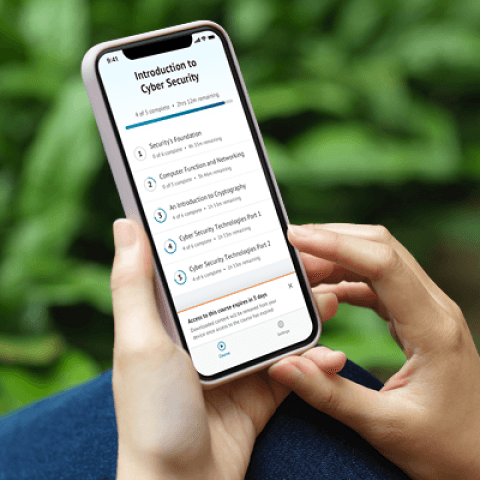SEC595: Applied Data Science and AI/Machine Learning for Cybersecurity Professionals


Experience SANS training through course previews.
Learn MoreLet us help.
Contact usBecome a member for instant access to our free resources.
Sign UpWe're here to help.
Contact Us
Apply your credits to renew your certifications
Attend a live, instructor-led class at a location near you or remotely, or train on your time over 4 months
Course material is geared for cyber security professionals with hands-on experience
Apply what you learn with hands-on exercises and labs
Transform the CIS Controls into a defensible roadmap that strengthens security, ensures compliance, and prepares your organization for the future.
I would recommend this course to anyone that is going to be an ISSO or ISSM or CISO.
Learn to put the CIS Critical Security Controls v8.1 into action across IT, cloud, third-party, and emerging environments. This hands-on course shows you how to stop attacks mapped in the MITRE ATT&CK framework, strengthen programs through automation, and align security with compliance frameworks. Through practical labs and Cyber42 leadership simulations, you’ll gain the skills to build resilient, defensible cybersecurity programs that stand up to both threats and scrutiny.


Brian Ventura, a Partner at Cyverity, an information security consulting firm specializing in governance, focuses on enterprise information security governance, risk, and compliance.
Read more about Brian VenturaExplore the course syllabus below to view the full range of topics covered in SEC566: Implementing and Auditing CIS Controls.
Learn the foundations of the CIS Controls framework, its evolution, and implementation strategies. Focus on enterprise asset inventory as the cornerstone of security, exploring tools and techniques to maintain accurate device tracking across complex networks.
Become proficient in the defensive domains of software control, data protection, and identity management. Learn implementation techniques for secure configurations, privileged access controls, and effective account management systems.
Discover the inner workings of vulnerability management, secure configurations, and audit logging implementation. Gain proficiency in techniques to protect email and web browsing while maintaining comprehensive security baselines.
Delve into advanced system protections: malware defenses, data recovery, and network infrastructure security. Learn to monitor network traffic and detect malicious activities using practical tools.
Develop skills in governance domains including security awareness, service provider management, and incident response. Discover techniques for app security, effective security management, and penetration testing.
Perform cybersecurity audits on the organisation’s ecosystem. Ensuring compliance with statutory, regulatory, policy information, security requirements, industry standards and best practices.
Explore learning pathLead operational teams from the point of view of an adversary in order to protect your most sensitive assets.
Explore learning pathThis role conducts conducts cybersecurity research and development. Find the SANS courses that map to the Cybersecurity Research & Development SCyWF Work Role.
Explore learning pathManages compliance with cybersecurity-related standards, legal and regulatory frameworks based on the organisation’s strategy and legal requirements.
Explore learning pathResponsible for conducting software and systems engineering and software systems research to develop new capabilities with fully integrated cybersecurity. Conducts comprehensive technology research to evaluate potential vulnerabilities in cyberspace systems.
Explore learning pathDaily focus is on the leadership of technical teams. Includes titles such as Manager, Information Security Specialist, and Program/Project Leader.
Explore learning pathResponsible for analyzing data collected from various cybersecurity defense tools to mitigate risks.
Explore learning pathResearch the cybersecurity domain and incorporate results in cybersecurity solutions.
Explore learning pathAdd a GIAC certification attempt and receive free two practice tests. View pricing in the info icons below.
When purchasing a live instructor-led class, add an additional 4 months of online access after your course. View pricing in the info icons below.
A comprehensive walkthrough of the Critical Security Controls, not just focusing on the 'what', but more importantly the 'why.' It’s been an invaluable learning experience for me.
I would recommend this course to anyone that is going to be an ISSO or ISSM or CISO.
Very valuable because it focuses on what matters, and provides practical and easy ways to improve security posture.

Get feedback from the world’s best cybersecurity experts and instructors

Choose how you want to learn - online, on demand, or at our live in-person training events

Get access to our range of industry-leading courses and resources